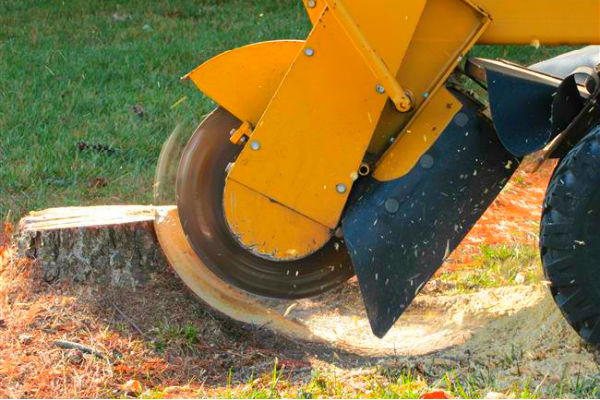How to uproot a tree stump?
Welcome to Arbortrue CA guide to uprooting tree stumps, offered to you by our expert arborists. As tree care and maintenance experts, we understand the difficulties that come with tenacious stumps left behind after tree removal. In this article, we’ll share professional thoughts, strategies, and recommendations for tackling stump removal projects of any size. Whether you’re a homeowner looking to reclaim your landscape or a professional landscaper looking for expert help, our team is here to provide you with the expertise and resources you need to properly uproot tree stumps and restore your outdoor space to its full potential.
Why uprooting a tree stump is important
Uprooting tree stumps is necessary for a variety of reasons. For starters, it removes potential safety hazards, reducing tripping accidents and injuries, particularly in locations frequented by children and pedestrians. Moreover, removing stumps improves the beauty of your landscape, producing a visually appealing environment. Stumps left behind can also attract pests such as termites and ants, resulting in infestations that can spread to other trees or structures. Furthermore, removing stumps increases soil health by limiting root decomposition and fungal growth, allowing new plants to grow to their full potential. Finally, it makes landscaping and gardening easier, allowing you to make better use of your outdoor space for planting, constructing, and other activities. Overall, removing tree stumps is critical for safety, aesthetics, insect control, soil health, and practical landscaping.
How to uproot a tree stump with a stump grinder

Before you begin, make sure you have the appropriate safety equipment, such as goggles, gloves, and ear protection. Remove all trash and obstructions from the area around the stump. Check for rocks or other objects that could cause damage to the grinder. Inspect the stump for size and potential impediments, such as roots or pebbles. Position the stump grinder next to the stump, making sure it is stable and level. Adjust the grinder blade’s height to suit the stump’s size. Lower the blade so that it is slightly above the stump’s surface. Start the grinder engine and gradually drop the blade onto the stump. To gradually eliminate material, begin grinding sideways. Check the grinding depth to make sure you’re removing enough material to thoroughly uproot the stump. Move the grinder back and forth across the stump’s surface, eventually grinding it down to the ground. To prevent regrowth, pay particular attention to any roots that extend from the stump and crush them down. After reducing the stump to ground level, switch off the grinder and remove any remaining debris. Properly dispose of stump grindings, either by composting or at a recognized facility. Finally, conduct a safety inspection of the area to ensure there are no leftover dangers. To efficiently uproot a tree stump with a stump grinder, follow these instructions. Remember to prioritize safety throughout the procedure, and consider consulting an expert if you’re unclear on how to use the equipment.
How to uproot a tree stump manually
Examine the size and condition of the stump. Determine whether it is feasible to remove manually based on its size and root structure. Collect the essential tools, such as an axe, shovel, mattock, digging bar, and chainsaw (if necessary). If the stump is substantial, use a chainsaw to cut any visible roots that extend from it. This will make it easier to loosen the stump from the soil. Using a shovel or mattock, dig around the stump’s base to expose the roots. To loosen the soil around the roots, break it up. Use an axe or pruning saw to prune any big roots that are impeding the removal process. Rock the stump back and forth to dislodge it from the ground. While rocking the stump, pry it upward with a digging bar or lever. Continue digging and removing the soil beneath the stump to reveal more roots. This will make it easy to remove the stump from the ground. Once the stump is sufficiently loose, employ a combination of rocking and lifting to take it out of the ground. Depending on the size and weight of the stump, you may require additional assistance or tools. To level the ground, fill the hole the removed stump created with soil and tamp it down. Remove the stump and any residual debris and dispose of them properly, either by composting or at a designated facility. Wear appropriate safety equipment, such as gloves and goggles, when working with tools or the stump. Be wary of falling debris and unsteady ground. Following these procedures will allow you to physically uproot a tree stump without using heavy gear. It may take some physical effort and patience, but it can be an effective approach to removing stumps from your property.
How to uproot a tree stump by burning
Burning a tree stump uproots it through a controlled process that gradually breaks it down. Here’s how you do it in points:
Remove any combustible materials or trash from the area surrounding the stump. Using a power drill, bore many holes in the top and sides of the stump to allow airflow. Pour a flammable accelerant, such as kerosene or petrol, into the holes and on top of the stump. Light the accelerant with a match or lighter, then let the stump catch fire. Monitor the burning stump to ensure its containment and control. To keep the fire going and ensure that the stump burns evenly, add more accelerant or wood. Once the stump has burned down to a manageable size, use water or a fire extinguisher to put it out. Make sure to completely extinguish any remaining ashes and debris before handling them. Burning a tree stump can be an effective way to dispose of it, but you must do it carefully and according to safety guidelines to prevent accidents and property damage.
How to uproot tree stump chemically
Use a power drill to make multiple holes in the stump’s top. Space them evenly across the surface and make them deep enough to reach the roots. Fill each hole with a concentrated herbicide that contains glyphosate or triclopyr. These chemicals operate to kill both the stump and the roots. Follow the manufacturer’s recommendations for the exact product you’re using, as proportions can differ. Typically, you should use an undiluted herbicide. After applying the herbicide, place a tarp or plastic sheeting over the stump to discourage rainwater from diluting the chemicals and keep pets and children away from the treated area. Allow a few weeks for the herbicide to penetrate and kill the stump and its roots. During this period, you may notice the stump begin to rot and soften. Once the stump has deteriorated enough, try to remove it with a shovel, hatchet, or stump grinder. The softened timber should be easier to break down and remove. When handling herbicides, remember to wear gloves, protective glasses, and proper clothes, as well as follow the safety instructions listed on the product label. Additionally, be aware of municipal restrictions governing the use of herbicides and tree stump removal.
Related Posts:
How to uproot a tree stump by hydraulic force
Hydraulic stump removal involves extracting the stump from the ground using specialized equipment and hydraulic force. Here’s how the process operates:
Clear the area surrounding the stump and remove any objects that may impede the removal operation. Place the hydraulic stump grinder or extractor near the stump, ensuring that it is stable and properly fixed. Turn on the hydraulic system to generate forceful force, generally via a motor-driven pump or a tractor’s hydraulic system. Attach the hydraulic arm or blade to the stump, making sure the connection is secure. Use the hydraulic system to apply pressure to the stump, gradually lifting it off the earth. To ensure complete removal, use the hydraulic blade to cut through any remaining roots as you lift the stump. After extracting the stump, properly dispose of it at a designated facility or by composting. Hydraulic stump removal is a speedy and effective way to remove stumps of different sizes, making it a popular choice for landscaping and building projects.
FAQs
Is it best to grind or remove a tree stump?
Grinding is faster but it leaves the roots intact, perhaps resulting in regrowth. Complete elimination assures that there are no future difficulties.
How long does it take to uproot a tree stump?
The timeline varies according to stump size, type, and removal method. Chemical treatments can take weeks, whereas mechanical procedures are quicker.
Can I uproot a stump, or do I need to call a professional?
DIY is doable with the correct tools and skills, but specialists ensure safe and thorough removal, especially for larger stumps or sensitive regions.
Conclusion
Uprooting tree stumps is vital for landscape management, providing benefits such as safety, aesthetics, and soil health. Whether you use chemical treatments, mechanical removal, or professional aid, removing stumps creates a safer, more appealing outdoor environment for you and your family to enjoy.




